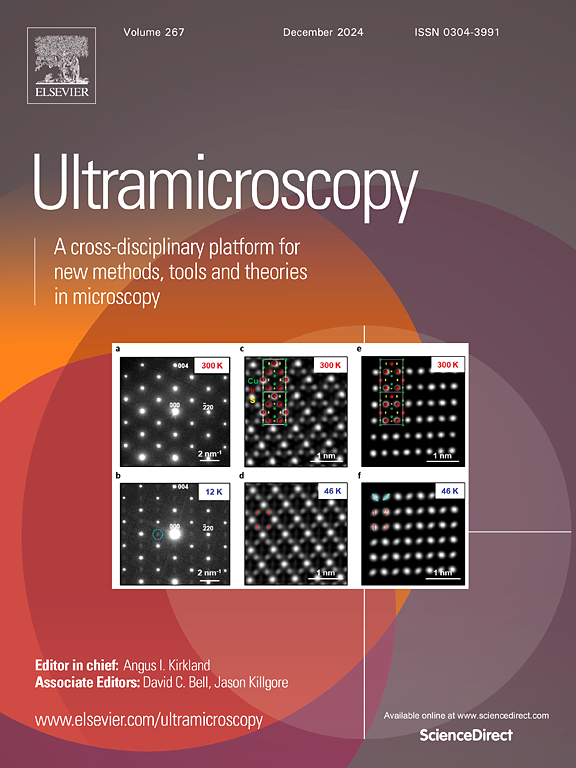Emittance Minimization for Aberration Correction II: Physics-informed Bayesian Optimization of an Electron Microscope
IF 2
3区 工程技术
Q2 MICROSCOPY
引用次数: 0
Abstract
Aberration-corrected Scanning Transmission Electron Microscopy (STEM) has become an essential tool in understanding materials at the atomic scale. However, tuning the aberration corrector to produce a sub-Ångström probe is a complex and time-costly procedure, largely due to the difficulty of precisely measuring the optical state of the system. When measurements are both costly and noisy, Bayesian methods provide rapid and efficient optimization. To this end, we develop a Bayesian approach to fully automate the process by minimizing a new quality metric, beam emittance, which is shown to be equivalent to performing aberration correction. In part I, we derived several important properties of the beam emittance metric and trained a deep neural network to predict beam emittance growth from a single Ronchigram. Here we use this as the black box function for Bayesian Optimization and demonstrate automated tuning of simulated and real electron microscopes. We explore different surrogate functions for the Bayesian optimizer and implement a deep neural network kernel to effectively learn the interactions between different control channels without the need to explicitly measure a full set of aberration coefficients. Both simulation and experimental results show the proposed method outperforms conventional approaches by achieving a better optical state with a higher convergence rate.
发射最小的像差校正II:一个电子显微镜的物理通知贝叶斯优化
像差校正扫描透射电子显微镜(STEM)已经成为在原子尺度上理解材料的重要工具。然而,调整像差校正器以产生sub-Ångström探头是一个复杂且耗时的过程,主要是由于难以精确测量系统的光学状态。当测量既昂贵又有噪声时,贝叶斯方法提供了快速有效的优化。为此,我们开发了一种贝叶斯方法,通过最小化一个新的质量度量,波束发射度,来实现完全自动化的过程,这被证明相当于执行像差校正。在第一部分中,我们推导了光束发射度度量的几个重要性质,并训练了一个深度神经网络来预测单个Ronchigram的光束发射度增长。在这里,我们使用它作为贝叶斯优化的黑盒函数,并演示了模拟和真实电子显微镜的自动调谐。我们为贝叶斯优化器探索了不同的代理函数,并实现了一个深度神经网络核,以有效地学习不同控制通道之间的相互作用,而无需显式测量一整套像差系数。仿真和实验结果表明,该方法具有较好的光学状态和较高的收敛速率。
本文章由计算机程序翻译,如有差异,请以英文原文为准。
求助全文
约1分钟内获得全文
求助全文
来源期刊

Ultramicroscopy
工程技术-显微镜技术
CiteScore
4.60
自引率
13.60%
发文量
117
审稿时长
5.3 months
期刊介绍:
Ultramicroscopy is an established journal that provides a forum for the publication of original research papers, invited reviews and rapid communications. The scope of Ultramicroscopy is to describe advances in instrumentation, methods and theory related to all modes of microscopical imaging, diffraction and spectroscopy in the life and physical sciences.
 求助内容:
求助内容: 应助结果提醒方式:
应助结果提醒方式:


